#german rearmament
Text
1933 – Founded Luftwaffe


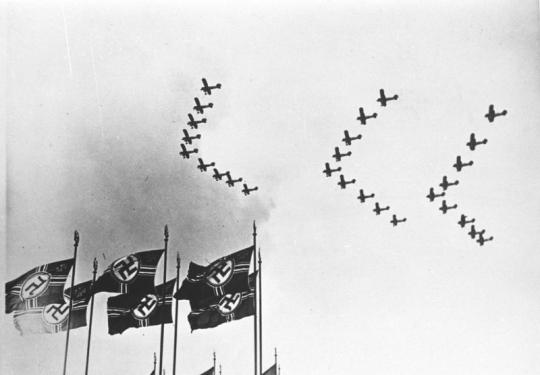
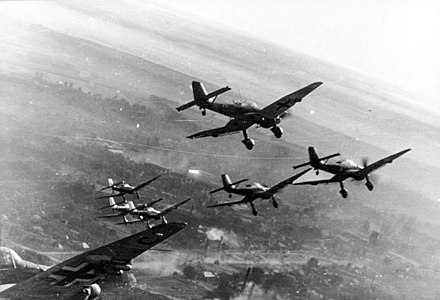
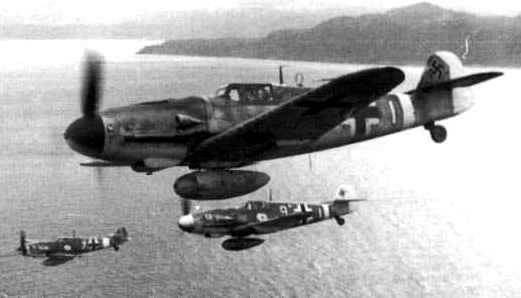
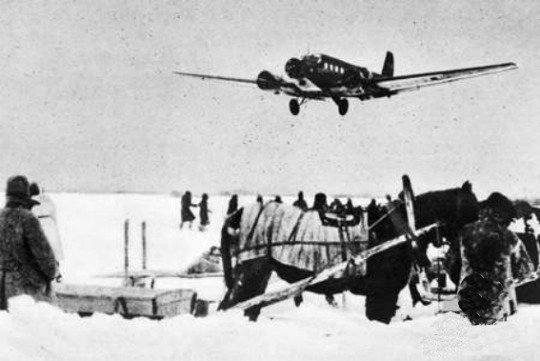
All military aviation organizations within or under the control of the RLM of Germany were officially merged in a covert manner to form its Wehrmacht military's air arm, the Luftwaffe.
0 notes
Photo

“WILL THE EX-KAISER RE-ASCEND GERMAN THRONE?” Owen Sound Sun Times. March 13, 1933.
---
News from Germany is quite disturbing at the present time. The Republican flag has been replaced by the flag of the Ex-Kaiser Wilhelm, by order of President Von Hindenburg, with the Hitler flag having equality with it. Europe is much concerned over recent events in Germany and there are hints of another war.
From left to right:
EX-KAISER WILHELM,
CHANCELLOR HITLER
PRESIDENT VON HINDENBURG
[AL: A key lesson from reading Canadian coverage of the Nazi seizure of power is that even the most anodyne newspaper coverage was rightly concerned about what this meant, and had Hitler pegged as a dangerous militarist. It was only later, at high levels of press and politician, that a pervasive effort was made to make his government seem reasonable and normal.]
#nazi seizure of power#german militarism#german monarchy#hohenzollern#kaiser wilhelm ii#hin#gravediggers of german democracy#german rearmament#nsdap#imperial germany#third reich
0 notes
Text
Rumors of War
Above: Scores of German tanks lined up at a harvest festival near Hanover, produced in defiance of the Treaty of Versailles. Germany began rapidly rearming shortly after Hitler came to power in January 1933.
The year 1933 marked a shift in the political winds, starting with Adolf Hitler’s rise to the chancellorship of Germany in 1933. By October he withdrew from the League of Nations and the…

View On WordPress
#Alan Dunn#Clifton Fadiman#College football 1930s#Columbia Lions 1933#E.B. White#Florence Finch Kelly#German rearmament 1930s#Harry Brown#Helen Hokinson#Henry Anton#Howard Brubaker#I. Klein#Inter-Parliamentary Union#James Thurber
0 notes
Text
Finished The Wages of Destruction.
Solid 9/10.
Core ideas to take away:
work creation was a minor element of Nazi economic policy, a distant secondary concern after rearmament
rearmament had widespread public support in germany
shifting to autarky took extremely hacky and likely long-run unsustainable export controls, and even *export subsidies* because imports were still an inescapably vital input to industrial production in
controlling big business was largely a "soft co-opting" project while the agriculturalists were insane morons who were much more staunchly pro-nazi
once at war, Germany was going for broke from the very beginning and there was near-zero slack they could've squeezed out more war production from
truly pitiful productivity rate from Germany's conquered continental empire - the workers were far far more productive if deported to Germany than working in home countries
German surface navy seems useless, they didn't even have the oil to run the ships, and metal would've been better used elsewhere
Speer was a shit, Tooze hates hates him
bombing campaign actually was successful! specifically taking out the Ruhr
"blitzkrieg" doctrine was developed as they went; original 1940 invasion of France battleplan was to go "right up the center" not through the Ardennes and pre-battle production focused on heavy artillery ammunition
Bigger points: German "Strategy"
Germany escalated from diplomatic crisis to war with Poland/UK/France, and to war with the Soviet Union, and then America, out of a series of perceived closing windows of opportunity. First one was seeing UK/French production overtaking them in rates and catching up on stocks. In 1940 the US fully commits to aiding Britain, creating sense of "the bombers are coming eventually" and need to gain immediate advantage by conquering the Soviet Union.
Bizarrely, German production was focused on the Luftwaffe in preparation for fighting US/UK air war as Germany was getting ready for Barbarossa!
Declaration of war on US pitched as confirming alliance with Japan, but still feels stupid. Germany could just stay quiet and force US to either engineer entry to European conflict another way or stay out. Still seems less stupid, considering this is at a time when Barbarossa is coming apart.
But overall, a sound if massively risky plan assuming you accept the insane basic assumptions. Hitler's strategic vision often gets assumed to be terrible out of disgust for the consequences of his actions and their failure.
I really do wonder what the vibe was among German economic elite from 1942 onwards, it's obvious the war is not winnable, that you're very fucked, and that everyone is coming to kill you.
Anyways, good book and worth reading/listening to. Tooze could've slimmed down on the pre-war stuff. I find him vaguely irritating with how he brings up irrelevant things just to show how smart he is but that's probably just envy.
P.S.
The original Volkswagen was just a massive scam with no actual civilian cars being produced despite taking all the payments for the vehicles. Possibly suggests two dominant strains of conservatism? Former is old aristocratic conservatism of the nobility or classic US elite; latter is the populist oppositional culture right-wingism which is about 64% scam artists.
68 notes
·
View notes
Text
Hermann Goring
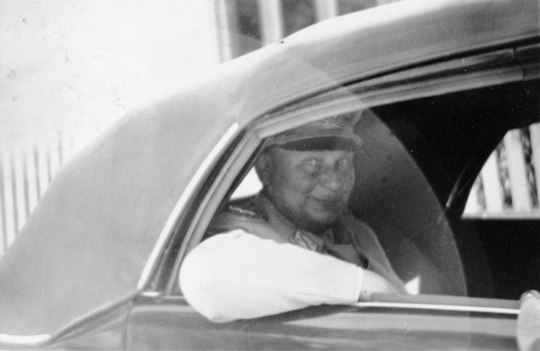
This is Hermann Goring, the Reich minister for Aviation, timeline:
1893: He was born in Rosenheim, 12 January.
1895: Albert, his younger brother, was born.
1904: He was sent to boarding school, where the food was poor and the discipline was harsh.
1909: He was sent to a military academy at Berlin Lichterfelde, from which he graduated with distinction.
1912: He joined the Prince Wilhelm Regiment (112th Infantry) of the Prussian army in 1912.
1913: His father died.
1913: He was admitted to officers' school.
1914: The First World War began.
1914: He served with his infantry regiment in the region of Mülhausen, a garrison town just a mile from the French border.
1915: He passed to the newly formed Luftstreitkräfte, the air force of the German Empire.
1915: He and his friend Loerzer were assigned as a team to FFA 25 in the Crown Prince's Fifth Army. They flew reconnaissance and bombing missions.
1915: He received the Iron Cross first class.
1918: When Manfred Von Richthofen, the legendary Red Baron, died Goring succeeded him as his successor.
1918: Highly decorated, he was also awarded the medal for valor Pour le Mérite, the highest German military decoration at the time.
1918: The First World War ended.
1920: He met his first wife, Carin von Kantzow.
1922: Göring went to Munich to study political science at university.
1922: He met Hitler and he joined the Nazi Party.
1923: He was given command of the Sturmabteilung (SA) as Oberster SA-Führer
1923: He married Carin.
1923: He take part in the failed Munich Putsch, and he was wounded in the groin.
1924: He and his wife visited Rome, passing through Florence and Siena. Göring met Mussolini.
1927: Thanks to a general amnesty, he and his wife were able to repatriate.
1928: He was elected deputy to the Reichstag.
1931: His wife died.
1931: He was sent on a mission to the Vatican, where he met Pope Pius XI.
1932: He was elected president of the Reichstag and from that position supported Hitler's bid for chancellor.
1933: He was one of the main actors in the Reichstag fire, used by the Nazis to eliminate any opposition.
1933: He was appointed Minister-President of the Free State of Prussia.
1933: He created the Gestapo.
1933: Adolf Hitler was appointed Reich Chancellor.
1933: He was appointed minister for aviation.
1933: He was appointed General der Infanterie by President von Hindenburg.
1933: He built his home called Carinhall in honor of his first wife.
1934: He granted control of the Gestapo to the SS.
1934: He was one of the main instigators of the Night of the Long Knives together with Himmler.
1934: He was appointed Reich Minister for Forestry.
1935: He married his second wife Emmy Sonnemann.
1935: He founded the Luftwaffe.
1936: He was appointed Reich Plenipotentiary for the Four-Year Plan.
1936: He also became responsible for the plan to confiscate the assets of German Jews, which was supposed to finance the rearmament of Germany.
1938: His only child, Edda, was born.
1938: With the help of Himmler's Gestapo, he plotted first against von Blomberg and then with his successor, von Fritsch, causing them both to fall
1938: He played an important role in the Anschluss, the union between the Third Reich and Austria.
1939: He created the Reich Central Office for Jewish Emigration in Berlin, with the task of promoting the departure of Jews from all German territories, and placed it under the direction of Heydrich.
1939: Hitler designates him as his successor.
1939: The Second World War began.
1940: Göring was given a renewed mandate to direct the "Four Year Plan" for the next four years, which made him responsible for the war economy.
1940: By a decree on 19 July , Hitler promoted Göring to the rank of Reichsmarschall des Grossdeutschen Reiches (Reich Marshal of the Greater German Reich), a special rank which made him senior to all other army and Luftwaffe field marshals.
1940: He gave directives for the plunder of the occupied territories, mainly France.
1941: It was Göring who gave, on Hitler's behalf, the order to prepare a "final solution to the Jewish problem" to Reinhard Heydrich.
1945: He was arrested by the Allies.
1946: He was tried at the Nuremberg trials.
1946: He committed suicide to avoid execution.
Sources:
Wikipedia: Hermann Goring
Military Wiki: Hermann Goring
❗❗I DON'T SUPPORT NAZISM, FASCISM OR ZIONISM IN ANY WAY, THIS IS AN EDUCATIONAL POST❗❗
41 notes
·
View notes
Text
BERLIN — Russia's invasion of Ukraine is forcing Germany to turn its military into a powerful and well-financed fighting force focused on defending the country and NATO allies, Germany's chancellor said on Friday.
"Today, nobody can seriously doubt what we in Germany have been avoiding for a long time, namely that we need a powerful Bundeswehr," Olaf Scholz said on the second day of a political-military conference presenting the deep change in Berlin's strategic thinking.
"Our peace order is in danger," he warned, also mentioning the war between Hamas and Israel and adding that Germany needs "a long-term, permanent change of course."
getting some real post-Treaty of Versailles rearmament vibes here
40 notes
·
View notes
Note
If Russia had still been under the rule of the Tsars during WWII, would it have lasted as long as their soviet counterparts did with the invasion by Nazi germany?
Probably. Many of the reasons for the early successes of Operation Barbarossa was due to Stalin's incompetence - abandoning the Stalin Line, not building the Molotov Line, and ignoring intelligence reports about Hitler amassing army. While it's entirely possible there is an equally incompetent (or even moreso) Tsar in power, chances are strong than Russia would have had a stronger relationship with Britain and would be less likely to ignore intelligence reports.
Similarly, the USSR was likely to have experienced economic collapse without Lend-Lease, and I doubt the United States would have balked at delivering aid to a Russian Tsardom, which means it's likely that the Russians don't fracture on that front.
And of course, let's not forget that Hitler was openly genocidal toward Slavs and was waging an aggressive war, and the fighting was on Russian territory. All of those things tend to stir up the willingness to endure tremendous hardship and fight on to the bitter end.
The question of whether or not the 20th century would have developed the same way is an open question. A Russia that is friendly with Britain is likely not to have entered into the Treaty of Rapallo or covertly supported German rearmament.
Thanks for the question, Anon.
SomethingLikeALawyer, Hand of the King
15 notes
·
View notes
Note
A hypothetical scenario for you.
You have become the newest defense minister of the small nation of Elbonia.

The nation has begun a rearmament program, and you have been tasked with procuring the best main battle tank for the nation.
However, you are secretly a traitor working to sabotage Elbonia from within. Your real goal is to convince the Elbonian Army to accept a tank that will cripple them militarily - but it must be one that will appear good enough to be adopted, so you must be able to justify why it's "good".
There are three scenarios here:
1) during or just after WW2
2) Mid-70s, early-80s, height of the Cold War
3) 2024, present day
What do you pick, why, and how do you sell it while covering up it's flaws?
Ok.
Scenario 1) Panzer V "Panther". On the surface, and on paper, if you don't look too close, the Panther seems like a perfectly servicable medium tank, more than a match for the average medium tank of the time.
However, the transmission and engine are closer to the legal definition of a destructive device than the shells are. (A common problem with German medium and heavy tanks of the time.)
Scenario 2) probably an m551 or a stock T-80. Both seem promising on the face of things, but are really nothing more than hot garbage.
Scenario 3) Challenger 2. While the Challenger 2 is a capable tank, it is a very logistics-heavy tank, and the damned thing is nearly 3 decades old without many meaningful upgrades in its time. For an (assumedly) small nation like Elbonia, the Challenger 2 will prove a massive financial drain, and a logistical nightmare.
8 notes
·
View notes
Text
In March 1945, the New York Times called Europe a “dark continent” in a condition that “no American can hope to understand.” Destroyed by political extremism and laid waste by a catastrophic war, Europe had become a problem for “every human being in Capetown, in Kansas City, in Brisbane, in Lhasa.”
Quickened by the emergence of the Soviet Union as a global rival, the United States’ reordering of a prostrate, rubble-strewn Western Europe in the late 1940s produced an unprecedented economic, political, and societal success. Leveraging its economic strength to shape structural change, Washington facilitated the rebirth of the Western European economy, which quickly recovered from wartime destruction. With the Marshall Plan and other programs, the U.S. government conditioned its support on cooperation among European countries, which kick-started the process of economic and political integration, as the late Tony Judt described so well in his magisterial Postwar.
With U.S. nudging, Germany’s erstwhile enemies also accepted West German rearmament and integration into NATO, which kept the Soviets in check and Western Europe secure. All of this produced a period of peace and prosperity that was unprecedented in modern European history, and it laid the foundation for the continent’s peaceful unification after the collapse of the Soviet bloc.
Alas, Europe has lived off the diminishing returns of this epic achievement. Despite the European Union’s vast wealth and potential power, it remains reliably incapable of projecting unitary political action. As Ukraine burns, the Middle East festers, and China looms, European countries seem to be returning to their age-old state of division, competition, and distrust. Governments are divided on everything from Russia to Gaza to the U.S. Inflation Reduction Act. The traditional Franco-German engine of European integration and policy is divided; a dearth of strategic leadership is fragmenting Europe from within. The inability of Paris and Berlin to “speak with one voice” on supporting Kyiv’s war effort, for example, has resulted in protracted disagreements on how to handle the continent’s most serious aggression since World War II.
What the ongoing wars in Ukraine and the Middle East—and Europe’s growing panic over the possibility of no longer having the United States at its side—really highlight is that a window of opportunity now exists for Washington, as in 1945, to bend Europe toward a more strategically responsible direction.
The outcome could be a broadly Atlanticist EU that defends itself by combining NATO resources with far greater European military capabilities. It would be an EU that once again views energy and resource security as a core strategic objective and makes economic relations with like-minded allies a central pillar in its own geopolitical ambitions.
Without more pressure from Washington, the EU will very likely remain a diffident, divided, and awkward partner in confronting Russia, China, and other threats, putting both itself and the United States in danger.
Today, three overlapping events provide Washington with the opportunity to reshape Europe. The first is the ongoing war in Ukraine. Without continued U.S. military support, Ukraine not only lacks the capabilities to regain its occupied territories, but could also fail to defend itself from future Russian offensives. And while the EU loves to trumpet its overall financial aid to Ukraine, Washington has so far provided more military aid to Kyiv than all other major donors combined.
The reality is that the EU remains politically unwilling and militarily unable to compensate for current pause in U.S. military aid. In fact, the decades since 1989 have witnessed a dramatic reduction in European military spending, capabilities, and equipment stocks, and most countries have only recently and reluctantly begun the process of rearming. Even with vastly increased expenditures, it will take decades for the EU to meet its defense requirements.
Brussels was barely able to reach agreement in February on a 50 billion euro ($54 billion), multiyear aid package for Ukraine and will likely bicker for years on end over Ukraine’s prospective EU membership. Even the bloc’s modest aim of supplying Ukraine with 1 million rounds of ammunition by this spring quickly turned out to be unachievable. In the medium term, the EU’s approach to defense is what it has always been: Sunday sermons about European ambitions underpinned by a lazy dependence on the United States.
Despite their soaring rhetoric, Brussels and Kyiv understand that without Washington, Russian President Vladimir Putin holds the long-term advantage not only in Ukraine, but also all along the EU’s exposed eastern flank. No matter who wins the U.S. presidential elections in November, the United States should use the threat of withdrawing from NATO—something that former U.S. President Donald Trump considered during his administration—to fundamentally reshape European attitudes to their own security and defense.
Washington should explicitly link the continuation of U.S. military supplies for Ukraine to increased spending by European NATO members, significant EU funding for the recently launched European Defence Industrial Strategy, and expedited Ukrainian membership in the EU. Given Ukraine’s critical shortages of military equipment, one need not wait until all the details are hammered out, but an initial agreement should be finalized immediately.
This kind of pressure campaign on Europe could also help overcome the refusal of U.S. lawmakers to provide further aid to Ukraine. Once again, Congress could learn from U.S. policy in the 1940s and EU policy today.
The EU’s ongoing 50 billion euro funding package for Ukraine actually includes more than 33 billion euros ($35 billion) in low-interest loans, rather than grants. This is a similar concept to the lend-lease plan, the program used by the United States during World War II to supply Britain and other allies. The 1941 Lend-Lease Act allowed Washington to send war supplies to any nation deemed “vital to the defense of the United States.” Congress could adopt a similar approach to future aid to Ukraine. In fact, a Ukraine Democracy Defense Lend-Lease Act was already passed by Congress and signed by President Joe Biden in May 2022, but it expired at the end of September 2023. Its renewal could give Kyiv the military resources—when combined with European financial aid—to regain its territorial sovereignty.
Such an approach applies both a carrot and a stick to reshape the European Union’s security posture and support Ukraine’s survival. While aid to Ukraine critically serves U.S. national security, it is also a pressure point to shape the EU—which would be most affected if Ukraine were overrun—into a stronger, more useful ally.
The second window of opportunity for the United States to pressure Europe is energy policy. The EU’s ongoing decoupling from Russian natural gas supplies has resulted in a broader debate about how to balance the EU’s strict energy transition objectives—which are costing the bloc and its member states several trillion euros—with security of supply. In a welcome onset of energy realism, the EU recently labeled gas and nuclear energy as “climate friendly” transition fuels in moving toward a zero emission economy.
The United States already supplied nearly half of the EU’s imports of liquefied natural gas in 2022, making it the bloc’s energy supplier of last resort. Washington should condition this openly on Brussels remaining committed to achieving real energy security. Europe’s dependency on Russian gas is one reason that Putin thought he had a free hand to invade Ukraine in 2014 and again in 2022. Washington should press Europe—especially Germany—not to make that mistake again.
Finally, the Kremlin’s war and suspension of gas deliveries to Europe have conspired to unleash political and economic instability in Germany, the EU’s largest and most important economy. Against the background of political chaos—including the monthslong inability to pass a federal budget—an anxious and inward-looking German government is pursuing inconsistent and painstakingly cautious policies on Ukraine aid and other issues, all of which has served to alienate many EU member states. Europe cannot rely on Germany to lead the necessary reorientation of the EU into a bloc capable of developing meaningful military capabilities.
Therein lies the third opportunity and leverage point for the United States. Washington should step into the leadership void—not to lead Europe, but to help hammer out the next phase of the trans-Atlantic security relationship. Many EU member states—including most Nordic, Baltic, Central, and Eastern European states—would welcome direct pressure from Washington to condition trans-Atlantic security relations on clear European policy changes, most notably on a much more serious expansion of defense capabilities and meaningful energy independence from Russia.
That’s why Washington should squeeze Europe like it’s 1945—and why it would benefit both sides.
2 notes
·
View notes
Text
instagram
Anti-War-Day 2023
84 years ago today, the invasion of Poland by the German Wehrmacht marked the beginning of a terrible war of extermination that claimed some 28 million lives on the Soviet side alone. I am pleased that events are taking place today in many places to remember this and to learn lessons from history because the world needs nothing more urgently than peace. War must never again be allowed to emanate from German soil - this guiding principle, which shaped German foreign policy for decades, has unfortunately become a distant memory. Today, Germany is one of the largest arms producers in the world, and with the "turn of the times" and 100 billion euros extra for the Bundeswehr, the traffic lights are sending a clear signal for rearmament. Instead of promoting diplomacy and a ceasefire, tanks are being delivered to a bloody war that has long since become a proxy war between the West and Russia. I find this policy of the German government oblivious to history and irresponsible. The world needs more diplomacy, disarmament and peace instead of the logic of war and more and more weapons! Never again war!
2 notes
·
View notes
Text
1940-Field Marshal Ceremony
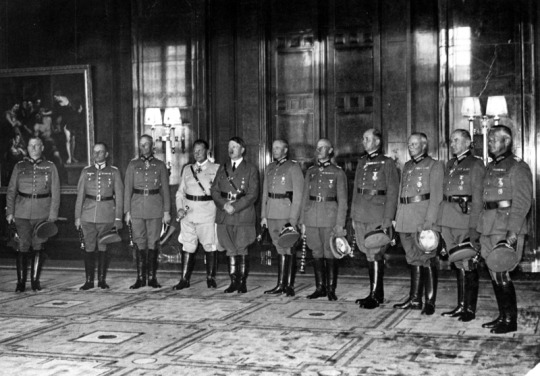
First occasion in World War II that Adolf Hitler appoints field marshals due to military achievements.
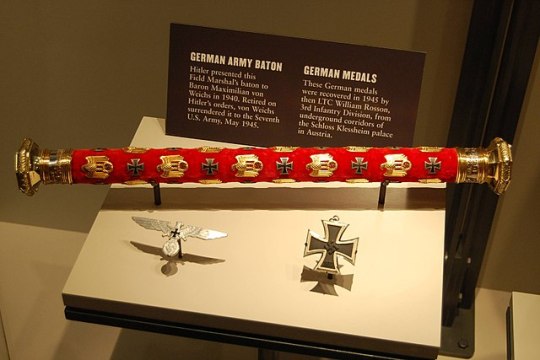
The 1940 Field Marshal Ceremony refers to a promotion ceremony held at the Kroll Opera House in Berlin in which Adolf Hitler promoted twelve generals to the rank of Generalfeldmarschall ("field marshal") on 19 July 1940. It was the first occasion in World War II that Hitler appointed field marshals due to military achievements.
The prestigious rank of field marshal had been banned after World War I. As part of German rearmament, the rank was revived. Hitler promoted twelve selected generals to field marshal during the ceremony in Berlin for their role in the swift victory in the Battle of France and to raise morale. The ceremony highlighted the power and prestige of the Wehrmacht; France was considered to have had the strongest army in Europe, yet had been humiliatingly defeated in just six weeks. The ceremony was the first time Hitler appointed field marshals due to military achievements and was celebrated like no other promotion ceremony of the war.
During the same ceremony, Göring, already Generalfeldmarschall since 1938, was promoted to the rank, newly-created especially for him, of Reichsmarschall.
8 notes
·
View notes
Photo

“Hitler Is in Favor of Complete Disarmament,” Kingston Whig-Standard. February 23, 1933. Page 12.
----
BERLIN, Feb. 23 - Chancellor Adolf Hitler, whom political opponents depict as a sabre-rattling believer in big armies and navies, has committed himself unequivocally to a policy of universal and complete disarmament.
"We are willing to go to any lengths to further the Ideal of disarmament," the Chancellor told the Associated Press.
#berlin#german rearmament#german militarism#lying to the press#nazi seizure of power#crisis of the weimar republic#weimarer republik#weimar republic#reichswehr#nsdap
0 notes
Text
Polish calls for reparations from germany shouldn't be considered without accounting for upcoming German rearmament & the fact that the current Polish military is [for now] probably stronger than the current German military
15 notes
·
View notes
Text

Mitsubishi F-2: the Japanese version of the F-16 Falcon
Fernando Valduga By Fernando Valduga 02/10/2022 - 23:07
Originally regarded as an all-Japanese fighter, it caused Japan to save significant expenses in the development of its F-2 light fighter, basing it closely on the U.S. F-16. Learn more about the multi-role fighter developed by Mitsubishi for JASDF.
During World War II (1939-45), the Japanese aeronautical industry designed and produced combat aircraft such as the Mitsubishi A6M Zero, which was very similar, in terms of technological quality and performance, to the most modern aircraft in the West.
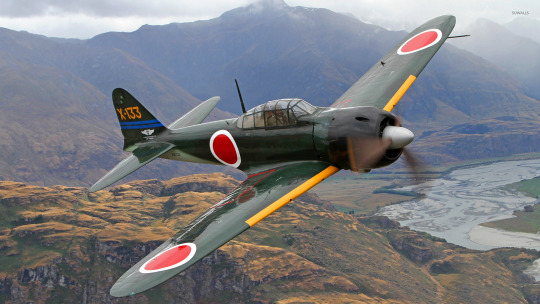
MItsubishi A6M Zero.
However, with its defeat in the war, in addition to having its industrial plant completely destroyed, Japan was prohibited from forming (classical) Armed Forces and, equally, from designing and developing military equipment, including combat aircraft, leaving the defense of the country in charge (exclusively) of the United States.
However, a few years after the end of the global conflict, the bipolar confrontation inherent in the Cold War (1947-91) in Asia, - like what happened in Europe with Germany (incorporated into NATO six years after its creation in 1955) - forced the US to review (albeit to a lesser extent compared to the German project of rearmament) its policy towards Japan, particularly due Japan in relation to Mainland China and the Soviet Union, forcing the legislation (now totally impeding) to be slowed down, allowing, in the context of this new geopolitical approach, to create a consistent Japanese self-defense force in three basic strands: land, naval and aeronautical.
In this way, JASDF (Japan Air Defense Force) began to use British and American-made aircraft, and, from 1952 (with the impasse in the Korean conflict), aircraft produced (totally or partially) on Japanese soil, with the withdrawal (albeit partially) of the previous restrictions on the Japanese development of aircraft, according to its own philosophy of copying existing technologies, improving and
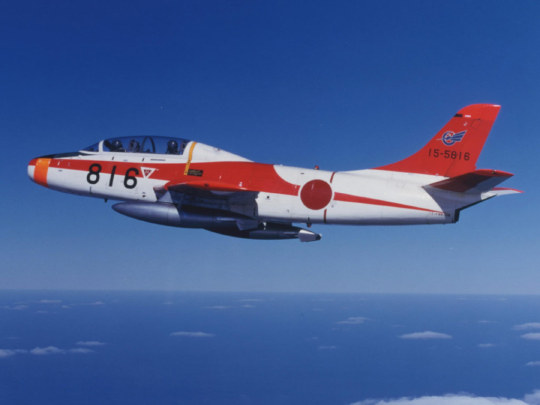
Fuji T-1.
As a result, as early as 1954 the project of the first jet military training aircraft was started and, in 1958, the Fuji T-1 (practically a Japanese version of the North American F-86 Sabre) carried out its first flight, with a total of 66 units being produced.
In the 1960s, JASDF already operated the American supersonic fighters F-4 Phantom II and F-104 Starfighter, giving rise to the need to train its pilots on a more capable and faster plane than the T-1.
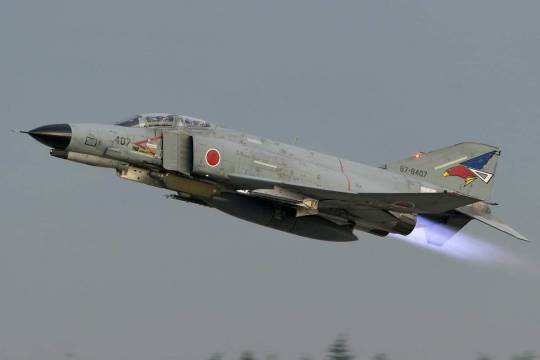
McDonnell Douglas F-4J Phantom from JASDF.
After many studies, it was considered about the possible advantages of manufacturing the European SEPECAT Jaguar aircraft in the country under license. The negotiations, however, were not successful, giving rise to the beginning of an aircraft project of its own (such as T-1), although (strongly) inspired by Jaguar.
In this tune, in 1971, the Japanese national industry managed to make a great technological leap with the launch of the Mitsubishi T-2, the first supersonic (training) aircraft developed and produced in Japan. 90 units of this aircraft were ordered in several versions, which served the JASDF from 1975 to 2006.

Mitsubishi F-1.
In the mid-1970s, the Japanese government decided, once again, to break with the paradigms, designing, developing and building its first combat aircraft based on its T-2 trainer, the Mitsubishi F-1, which had 77 units produced, maintaining the production and jobs of the local aeronautical industry.
In 1985, JASDF released the specifications for the acquisition of a new fighter, aiming to replace the F-1. The new aircraft should be able to load four anti-airy missiles, have no aerodynamic load limitation, be able to sustain loads from 3G (negative) to 9G (positive) and have a combat range of the order of 800km.

Mitsubishi T-2.
In that period, in addition to the F-1 "Supersonic ReiSen", - built and developed jointly by Mitsubishi Heavy Industries and Fuji Heavy Industries, endowed with a maximum speed of 1,700km/h and autonomy of 1,130km -, the Japanese also manufactured, under license from McDonnel Douglas, the iconic F-15 Eagle, being certain that, just as in the American Air Force
Not for another reason, in 1987, the governments of the two countries announced the development (together) of a version of the General Dynamics F-16 in partnership with Mitsubishi, which would be responsible for 45% of the development work.

In certain respects, this was another of the agreements that buried the exports (and even the construction in partnership) of the Northrop F-20 Tigershark, - the successor of the F-5A Freedom Fighter (and also the F-5E Tiger II) -, as a standard export fighter to the U.S. allied countries, leveraging the sales (direct and indirect) of the
Even though the U.S. and Japan are first-rate allied countries, curiously, the initial terms of the contract generated disagreements between the two sides. The Americans believed that the transfer of technology from such an advanced fighter could leave the Japanese industry in a privileged position in future competition with American companies, while the Japanese argued that they would share some (own) technologies without any consideration, even paying for the patents of various components of American technology.

Differences between F-16 and Japanese F-2.
Only in 1990 were all challenges finally overcome with the development of the new aircraft remaining divided in the base of 40% for the Americans and 60% for the Japanese.
The new aircraft was named Mitsubishi F-2 Viper Zero, in honor of the unofficial name of the (now Lockheed Martin) F-16 (and which ended up official in its latest version, F-16V) and the legendary Japanese fighter of World War II, and it is certain that this aircraft would be based on a larger version compared to the original design of the F-16.
The final price of each F-2 was, however, four times higher than the production value of an F-16 in America, even without taking into account the entire cost of the development of the aircraft.

Visually, the F-2 and the F-16 are very similar; however, some differences can be easily noticed, particularly in the outside: the wings of the F-2 have an area 25% larger than that of the original F-16; the horizontal stabilizer is also larger; the cabin of the F-2 is divided into three parts (to resist bird shocks), while the canopy of the F-16
In addition to the external differences, one can also mention the use of composite material in various parts of the aircraft, in addition to significant distinctions in armament and engine.

As the Americans did not want to give up the source code of the flight command system for the Japanese, they were forced to develop a completely new one, including considering the fact that the F-2 is heavier and has larger control surfaces and wing, in addition to having a different center of gravity from the F-16. For the elaboration of the new code, the results obtained with a modified F-2 aircraft for testing were mainly used. The first prototype of the F-2 left Mitsubishi's assembly line in Nagoya in January 1995, with the second taking off on its inaugural flight in December of the same year.
A total of four prototypes were built for flight testing and two for ground fatigue testing. The static and dynamic load tests revealed some weaknesses, especially in the newly designed wings, which were made of composite materials and, therefore, with innovative technology for the time. These findings were incorporated directly into the modification of series production, with the project proving, as a consequence, a great challenge for the Japanese aeronautical industry, since for the first time carbon fiber composite materials were used in the primary structure of an aircraft. The initial order of 141 aircraft has been reduced over the years and production was closed in 2011, with only 98 aircraft being manufactured, including the four prototypes.
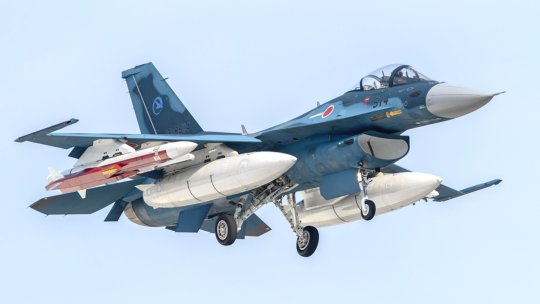
It is timely to point out that the so-called "Japanese F-16" also has variants (competitors) in other countries that, from the original North American fighter, have also developed (licitly) similar aircraft, such as the South Korean KAI/Lockheed Martin T-50 Golden Eagle and the Israeli IAI Lavi, equipped with canards (which, due to the in J-11A Flanker B, which, in turn, was an authorized Chinese version of the Russian Sukhoi Su-27SK, locally assembled, or the J-16, a "replica" of the Russian Sukhoi Su-30).
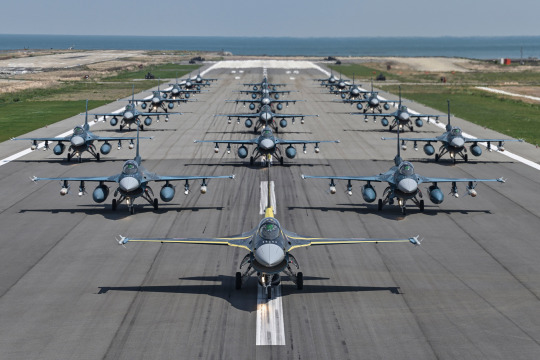
In 2020, in another bold step, the Japanese government began a selection process for the development of a fighter that is expected to replace the F-2 and F-15, like what the US managed to do 20 years earlier with the 5th generation stealth projects of the Lockheed Martin F-22 Raptor (winner of the competition with the Northrop YF-23) and the Lockheed Martin F
JASDF expects the new aircraft (with 5th generation technologies) to be fully operational from 2030. In this sense, a prototype for testing stealth technologies has already been built with the designation Mitsubishi X-2 Shinshin and has been flying since 2016.

It is worth noting that JASDF ordered 147 units of the F-35 Lightning II (which are already gradually being delivered) to maintain their air (qualitative) superiority over their opponents (notably China) and has not yet completely given up on making any partnership with Lockheed for the restoration of the production line of the F-22 Raptor, aiming at its acquisition, joint manufacture or

Reis Friede - Professor Emeritus of the School of Command and General Staff of the Army (ECEME), Honorary Professor of the School of Command and General Staff of Aeronautics (ECEMAR), Professor Emeritus of the School of Improvement of Army Officers (EsAO) and Special Lecturer of the Superior School of War (ESG).
Tags: Military AviationHISTORYJASDF - Japan Air Self-Defense Force/Japan Air Self-Defense ForceMitsubishi F-2
Previous news
U.S. Air Force lands most C-130Hs due to cracks in the propellers
Next news
Lilium reaches the milestone of the complete eVTOL transition in new video
Fernando Valduga
Fernando Valduga
Aviation photographer and pilot since 1992, he has participated in several events and air operations, such as Cruzex, AirVenture, Dayton Airshow and FIDAE. It has works published in specialized aviation magazines in Brazil and abroad. He uses Canon equipment during his photographic work in the world of aviation.
Related news
MILITARY
Swedish influenzas play a defensive role in the exercise of the Finnish Air Force
04/10/2022 - 12:00
MILITARY
Final project of the Future European Air Combat System will be launched in three years
04/10/2022 - 08:41
MILITARY
Sierra Nevada receives contract for support services for the Lebanon A-29s
03/10/2022 - 21:32
HELICOPTERS
U.S. Army orders more Boeing Chinooks Block II
03/10/2022 - 20:41
MILITARY
Thailand completes capacity updates of its C-130H fleet
03/10/2022 - 14:00
MILITARY
Ukraine shares drone video showing a Russian Ka-52 being shot down
03/10/2022 - 12:00
homeMain PageEditorialsINFORMATIONeventsCooperateSpecialitiesadvertiseabout
Cavok Brazil - Digital Tchê Web Creation
Commercial
Executive
Helicopters
HISTORY
Military
Brazilian Air Force
Space
Specialities
Cavok Brazil - Digital Tchê Web Creation
9 notes
·
View notes
Text

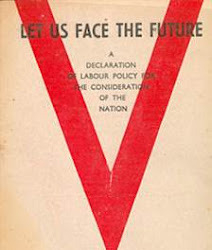
One of the key factors behind the Labour election victory in the summer of 1945 was the overwhelming support by members of the British armed services.
(Lord) Peter Carrington, later Foreign Secretary under Margaret Thatcher, but by the end of World War Two serving with the Grenadier Guards in Germany, offered this analysis to the BBC World Service in 2015:
"…I don't think any member of my squadron voted conservative…The very simple reason from their point of view was unemployment…A lot of them had been unemployed before the war. They blamed the pre-war (National) government which they thought was basically a conservative government, it was a simple as that…"
Aspiring Labour MP Denis Healy laid the blame heavily with Chamberlain’s appeasement policy, saying that many soldiers, sailors and airmen were Labour supporters as a result.
Labour MP Tony Benn, who would enter politics in 1950, succeeding Chancellor Stafford Cripps in the constituency of Bristol South East, said;
"…People said to each other, in the thirties, we had mass unemployment, we had the Means Test, we had fascism, we had rearmament. No unemployment in the war, we said. If you can have full employment to kill Germans, why in God’s name can’t you have full employment to build hospitals, build schools. And that was why we won. It was a rejection of 1930s Tory policy. It was just a determination to build a new society…"
The Labour manifesto made it clear that a new generation of returning veterans would be treated differently than those following the Great War;
"…The gallant men and women in the Fighting Services, in the Merchant Marine, Home Guard and Civil Defence, in the factories and in the bombed areas - they deserve and must be assured a happier future than faced so many of them after the last war. Labour regards their welfare as a sacred trust…"
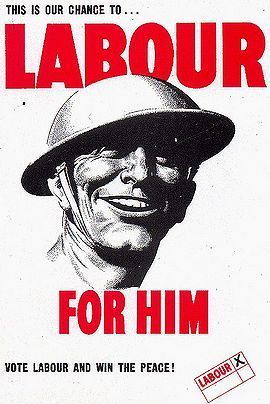
#history#social history#uk politics#modern history#working class history#social justice#human rights#society#uk government#uk history#democracy#post war consensus
14 notes
·
View notes
Text

Shit like this makes me explode. This Brit is a typical example of total ignorance.
As one of the few Germans who are still self-aware, I don't give a shit about any alleged guilt. If anyone thinks that I should fall into deep humility because my ancestors were sexy Nazis, then I say to them: Fick dich alter!
I really try to show compassion and understanding for everyone, but I react absolutely allergic to people trying to lecture me about my own nation's past with their rather distorted and patchy knowledge about history.
All Western pop culture is geared towards calling the Third Reich the worst thing in human history, always portraying the Germans as the greatest evildoers of humanity. Masses of shoddy films in which German has to function as the language of super villains. I don't know if I should be upset or flattered that we Germans are treated as so special. Honestly, it fills me with pride and makes my cock hard just thinking about it. Yes, I like being given the role of evil. And that's why I love to say: You guys are a pathetic bunch of shit.
German Aggression
The Germans were obviously too much competition for the West. They were smart, stylish and technologically many years ahead. Fuck, I think they were just awesome. Is that what you want to hear? Finally a confession to satisfy your dumb Nazi neurosis?!
You seriously expect me to be held accountable for something that was fucking long years before my time? Pay your fat useless ass? The only thing Poland or anyone else can get from me is a good kick in their inferior useless balls with my freshly polished boots.
You will hear no remorse from me, no regrets, no humility. Any of your demands for reparation payment will only make my cock harder since you are just trash whose ancestors should have been run over by German tanks so that the cracking of bones would have been the only thing left, along with the blood squirted in all directions. You like that, don't you? To be crushed by something so much greater and more precious.
For every predator there will eventually be an antipredator. The Allies even preferred to ally with the mass murderer Stalin to defeat that German antipredator. Communism in Europe would not have survived without massive rearmament by Americans. How strong and threatening must the Germans have been for capitalists and Bolsheviks to fraternize?
British Morality
What does British people think why the whole world speaks English today? Because Britain peacefully convinced the world of their broken language; because their cuisine is so great; or because half the world just said "Hey, you Brit guys are so kind and great, let's adopt your weird language!". No, Britain was the most warlike nation on this planet. They have enslaved entire continents, destroyed entire civilizations and exterminated entire peoples. And when a nation was too big to subdue, they drugged the entire country to weaken it. The opium wars against China prepared the breeding ground for the communists and Mao ultimately. Indirectly, the mass murders in China can also be blamed on the British nation.
Keinerlei Schuldgefühle
Has Britain already paid reparations to India, or to the many African states they ruthlessly subdued and colonized? Also, what about the native North American people who were nearly wiped out by British settlers? However, it is estimated that 50 to 100 million indigenous people lived on the American continent. Add in the millions of Africans or Indians killed by the British nation, then all that quickly sums up to several hundred millions in the face of several centuries of world wide British colonialism. Has Britain ever paid for it in any way, or at least made an apology, shown sincere remorse?
Keinerlei Besserung
Has the British nation learned anything? Did they get wiser? Absolutely no, because together with France and the US they bombed Libya in 2011 to bring them "democracy and peace" after their secret services and NGOs had already instigated popular uprisings to plunge the country into chaos. They set the fire themselves to pose as the extinguishing heroes. All they did was transform Libya from the most modern and prosperous country in North Africa to the most unstable and poorest. They call this western democratization. Given these policies, is it surprising that all of Africa today welcomes the Russians with open arms as an antidote to Western imperialism?
Nothing but shards
Besides the intention to exploit foreign raw materials, there was a second decisive reason why the Allies wanted to overthrow the Libyan government: In 2009, the Libyan ruler Gaddafi, who was also President of the African Union, proposed to the states of the African continent to convert to a new currency independent of the US dollar, called dinar gold. Consequently, Gadaffi intended to set up an alternative system to the dollar for Africa to limit Western post-colonial exploitation, where corporations replaced the role of colonial masters. However, the International Monetary Fund/IMF sitting in Washington would not let this happen and prompted its slave nations like the US and UK to overthrow Gaddafi and bomb his country to the ground. Anyone who doubts the power of the IMF, and is not strong enough like Russia will be destroyed. Syria would have suffered the same fate as Libya had the Russians not intervened to eliminate the "Islamic State" created by American and Israeli intelligence.
To this day, rival warlords and extremists backed by Western intelligence services fight for dominance in Libya, while Western corporations are able to covertly exploit the country's natural resources. Meanwhile, Libya became the gateway for refugee flows to Italy and Germany. The bloody shards left behind by the Allies must be cleared up by others! But instead of taking in at least a few refugees to make amends, the UK left the EU like rats abandoning the sinking ship.
Caught up by the own past
Radical Islam is a product of the West, like pretty much everything evil, which they later declare their enemy to have a reason to start wars. Even the laws in the Middle East and other Muslim countries criminalizing homosexuality date back to British colonial times. Such persecutions did not exist in the original Islamic jurisprudence. Men just fucked. It was the West that spread its primitive morality around the world along with its languages. The fact that they present themselves as the good guys today and promote LGBTQ shit so vehemently is a bad joke of history that cannot be surpassed in absurdity.
Evolution never stops
The German antipretator was higher justice, which the West refused to accept. This justice was only postponed with the sacrifice of the Germans. Just as the West continue to bomb down everything that seems to threaten their small democratic world, one day they will once again encounter an antipretator who may not be defeatable with any help.
5 notes
·
View notes